- Jan 29, 2025
Stop! Thief! Fighting Phytate Crimes
- Jolinda Rockett
- Good Food
What’s the story with beans, peas, peanuts and phytic acid?
Phytic acid is common and it is not your friend. In this post we will uncover the dangers of phytic acid but also, you will learn what you can do to minimize them.
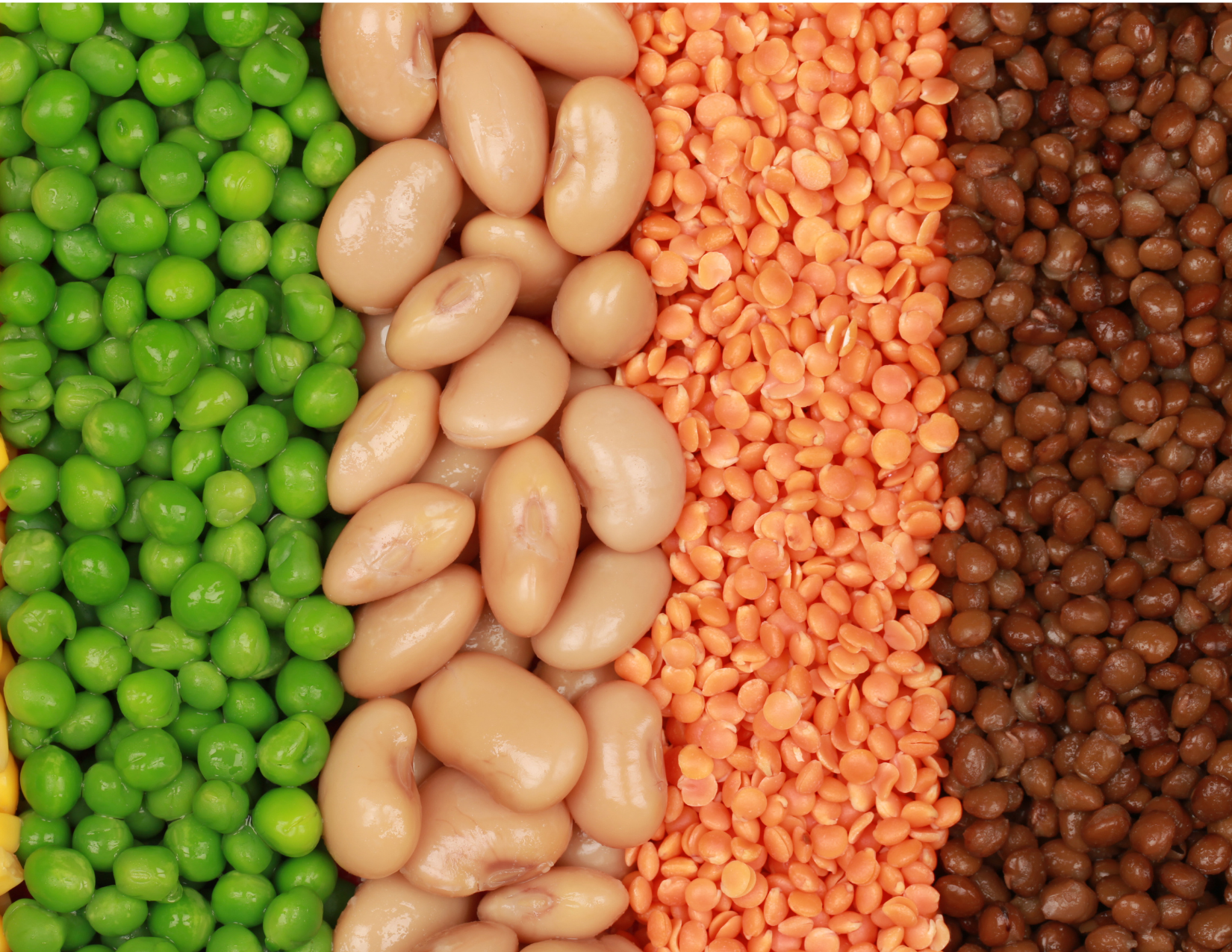
We find phytate (a form of phytic acid) riding on the shells and hulls of legumes like beans and peas, and any other seed a plant produces. It is essential for the plant, attracting and binding minerals to protect the seeds.
These are all seeds which allow plants to spread and ensure survival of the species.
· Beans, peas, and peanuts
· Seeds
· Grains
· Nuts
Phytates could be compared to a magnet that attracts and holds all the minerals needed to protect the plant’s seeds.
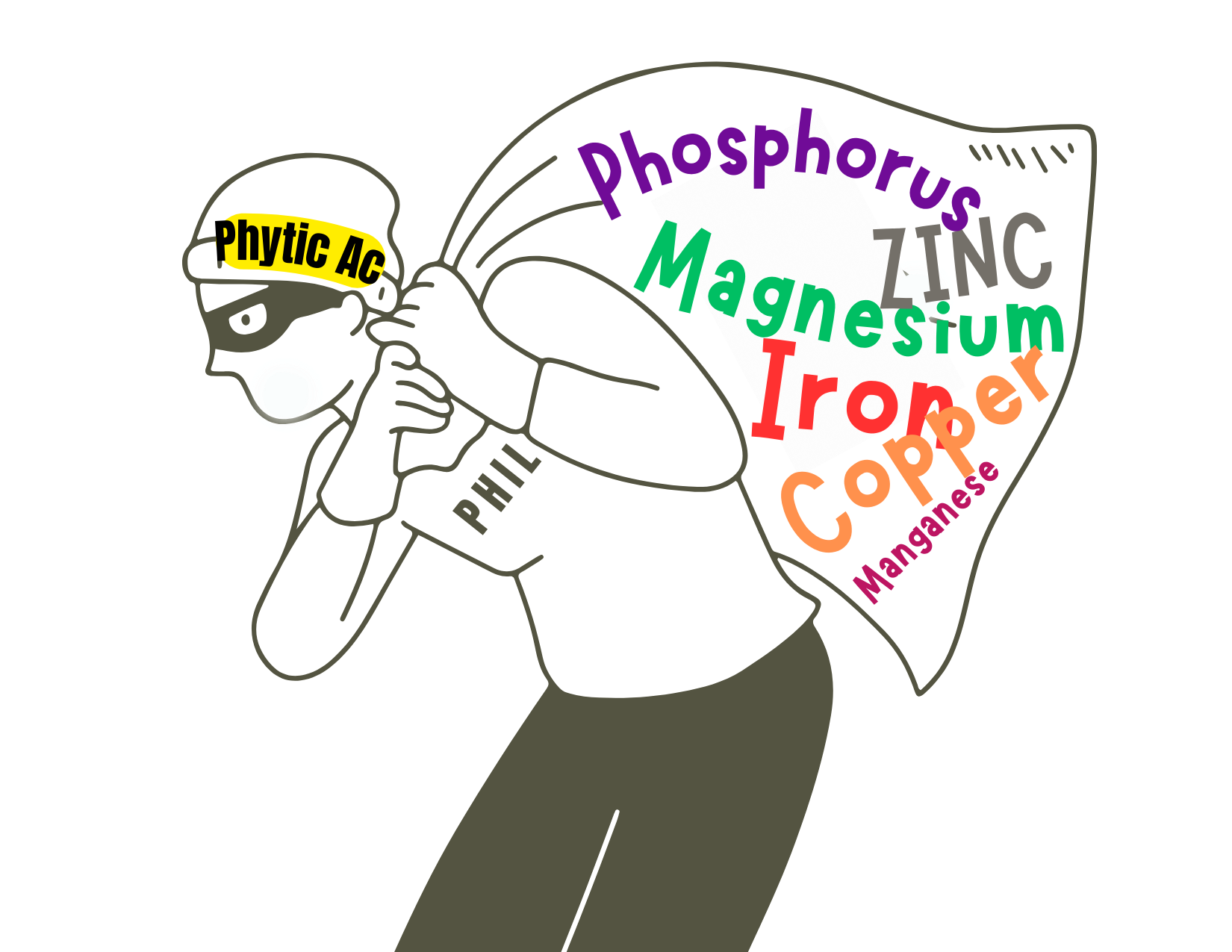
When you plant a bean, pea, or grain you get a plant. The seed is the plant’s way to keep the lineage going and it is strongly protected in nature. Seeds have a strong protection in the form of the seed casing or hulls where the phytates are found. Nothing is going to get that little tasty seed without paying for it.
Good for plants but bad for humans.
Phytates operate like magnets that attract and hold all the minerals moving through your digestive system. Once the mineral thief has been invited into the digestive system, it does what it was designed to do. It steals minerals.

Your body may protest, “Hey! I was going to use that mineral. I was taking it to be distributed! We NEED it.”, but the thief gets away with it. The mineral is now held by the phytate magnet – locked in and carried away, out of reach of normal patrolling enzymes.
Due to binding minerals in our digestive track, mineral deficiencies are created including calcium, iron, zinc, and other metabolic essentials. Fortunately, there are ways to mitigate the loss. You will learn methods that minimize the theft of our minerals include long soaking, sprouting, and the fermentation of the foods by acid-producing bacteria such as those found in sourdough leavening.
Some seeds want to be eaten but the phytic acid is protecting these, too. Again, because of the action of phytates, these seeds will not degrade in the digestive process. They have a clever way to be eliminated, usually causing rapid movement through the digestive system (diarrhea) and they pass out of the system ready to sprout in a package of fertilizer – the stool.
Sensitive people may be troubled by seeds when they cause cramping in the intestines. When the bowel objects, the animal either learns or instinctively knows to avoid the pain and avoid consuming the seeds of those plants.
But what about squirrels?

Rodents like squirrels are able to thrive on nuts and seeds because they have an abundant and hardy enzyme called phytase that breaks it into useful parts. Mice produce thirty times more phytase than humans, so they can be quite happy eating a raw whole acorn or pinenut.
And cows?
Ruminates like cows can easily and safely eat grains and other seeds because of their complex digestive system giving them several stages of digestion and the microbiomes necessary to denature phytates.
Severe problems require answers
Unfortunately in humans, mineral deficiencies are found where these foods are major dietary staples. Unless they are specially treated in food preparation (as we will see below) the reliance on them creates malnutrition.
And there’s more. Phytates cause further damage by inhibiting normally active digestive enzymes. The important enzymes affected include:
Pepsin - needed for the breakdown of proteins in the stomach
Amylase - needed for the breakdown of starch into sugar
Trypsin - needed for protein digestion in the small intestine
Adding supplemental digestive enzymes to your diet may be needed if you suffer indigestion after eating foods with phytates.
Unfortunately supplements to replace minerals won’t usually help because these will be blocked too.
Health-conscious people typically revere whole grain products like whole wheat bread, but you may be surprised to know bran, the outside covering of grains giving them a brown color, has the highest concentration of phytates. Experiments have shown that while whole grains have more minerals, those minerals are not bioavailable. By comparison, polished white rice has more available mineral than brown rice due to (you guessed it -the mineral thief) phytate.

Refining and removing the outer shell of the grain or seed improves the digestibility of it and therefore makes these processed grains and seeds easier to digest. This is why many traditional cultures recommend white rice for (congee) those who are ill.
[See a list of foods and the amounts of phytic acid they contain here.]
A world-wide nutrition problem
The foods high in phytates comprise 40 to 60 percent of the world’s population and are a leading cause of anemia, poor immune function, and poor growth in children. These issues are also being seen in affluent populations due to a trend to avoid animal proteins in favor of plant-based diets.
Can’t I just take supplements?
Supplementing your minerals along with your vitamin regimes is not as effective as you may think. The phytates are blocking those minerals, too.
If you want to consider the impact of inadequate minerals, here are a few mineral facts.
Zinc is a part of more than three hundred enzymes, affecting:
growth
immunity
wound healing
mental health
intelligence
digestion
blood sugar regulation
thyroid function
weight
sex hormones
-
skin.
Blocking zinc is a reason for reduced susceptibility to communicable illnesses since zinc is vital for immunity.
Iron deficiency anemia causes symptoms of:
fatigue
lethargy
weakened immunity
-
learning disabilities.
Iron deficiencies also affect the thyroid gland by reducing the output of thyroid hormone, which in turn leads to lower body temperature, lethargy and unwanted weight gain (symptoms of hypothyroid).
Calcium is critical for bone health, best muscle activity, and other body processes such as:
Bone health
Blood clotting
Cardiac function
Blood pressure
Muscle contraction
Preventing preeclampsia
-
Improved cholesterol levels
Reducing Phytates
The Weston Price Foundation published the opinion that people can tolerate phytates if they take precautions in preparation, but the warn these foods should never be eaten raw.
In addition to addressing preparation of food for consumption, we can improve our own internal environment. The population of our microbiome, including probiotic lactobacilli and other species of microflora, can produce phytase, the enzyme that denatures phytate. This is one more reason to consistently feed and restore your microbiome with fermented foods.
Now take a look at these 6 traditional techniques which have been developed over millennia. Scientific studies show the dangers of phytic acid are significantly reduced with these techniques.
Outside the laboratory we can learn a lot by how various cultures which take additional steps in food preparation to cope and thrive while eating legumes, seeds, nuts and beans.
In India, dosas made from soaked and fermented lentils and rice is an example. Native American cultures give us examples that have survived in Central and South America. For example, beans are often fermented after the cooking process to make sour porridge called chugo.
The Jewish custom is to eat leavened bread (in which the phytates traditionally have been deactivated by soaking and fermentation methods) for most of the year but eat unleavened bread (with phytate content intact) for Passover. This is a healthy approach because detoxification made possible by phytates can occur during the semi-fasting period.
I’ll present 6 methods that are generally relied upon by traditional cultures around the world. You may find you are already using a few of them.
Experienced writers and contributors suggest using several of these methods together to further enhance the nutrition of the commonly used grains and seeds. And we see this in the traditional examples provided.
We begin with soaking, then fermenting, sprouting, adding seaweed or rye, and roasting.
1. Soaking
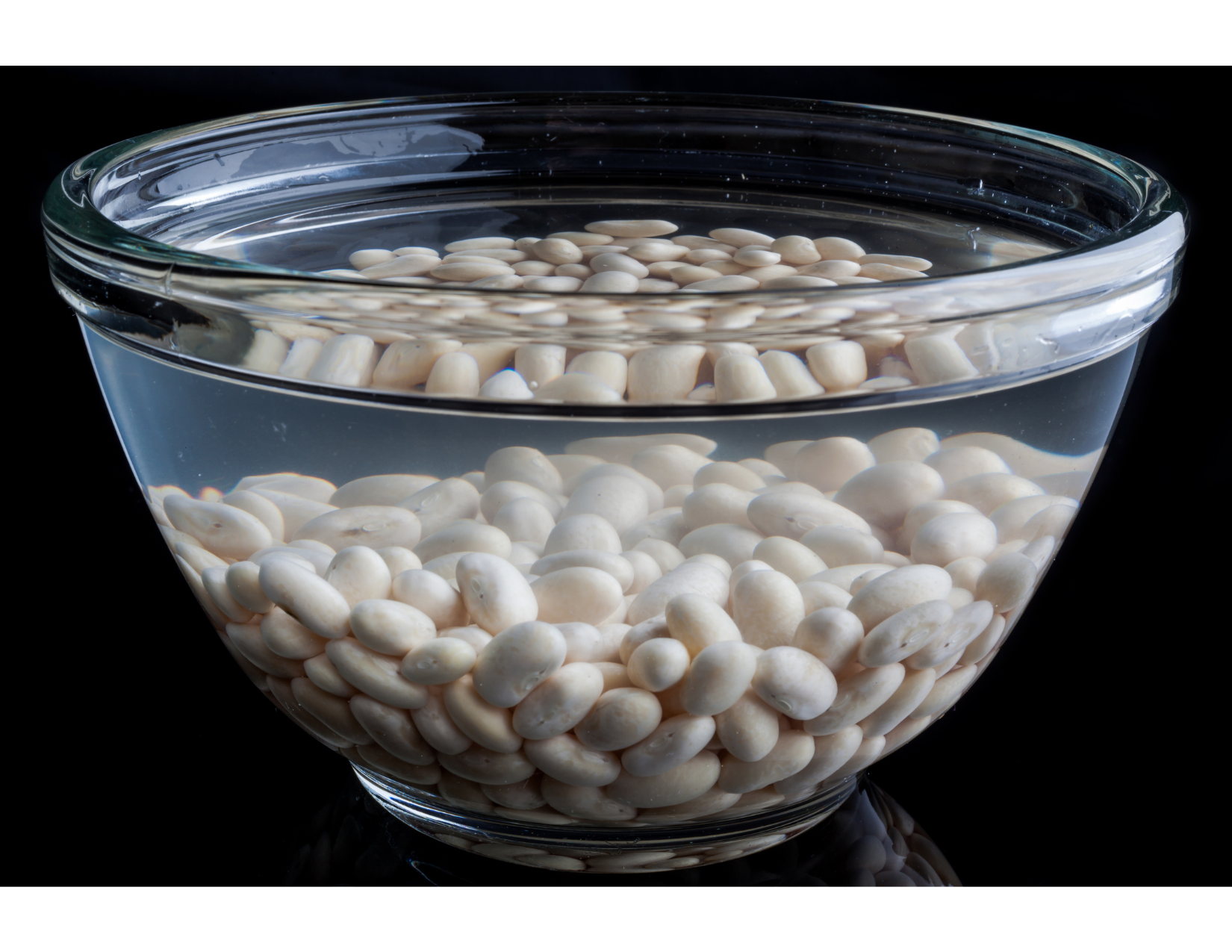
Soaking techniques
Soaking at room temperature for twenty-four hours reduced phytic acid by 16 to 21 percent.[1] This simple process removes many antinutrients and enzyme inhibitors.
Soaking removes a few minerals and water-soluble proteins. But if you are interested in consuming the grains, seeds, and nuts having the phytates, try soaking. It is the best method of reducing the damage.
How to soak foods to remove phytates
Cover dry seeds/grains/beans in water and let them stand overnight (or up to 24 hours) with clean water. Drain out the water and cover the seeds/grains/beans in fresh clean water again, swishing around, then drain thoroughly before preparing and cooking as usual. You will probably need less water after soaking it.
This recipe uses the soaking method to make crispy nuts.
Crunchy Munchy Nuts recipe may be found here.
Soaking Oats for morning breakfast
This technique is called “soaked oats” but the action that removes or disables the phytates is the addition of whey or vinegar to the soak, making it a type of fermenting.
To make oatmeal the old-fashioned way, mix 1 cup of steel cut oats with 1 cup of filtered water and 2 TBL yogurt, buttermilk, lemon juice or cider vinegar. Cover and leave on the counter overnight or for a minimum of 7 hours. It’s important for the oats to soak in a warm kitchen or cupboard, not in a cold refrigerator.
After 8 hours of soaking, other micronutrients may remain but phytic acid could be reduced by as much as 90%.
In the morning, add 1 cup of added water and sea salt, bring to a boil, reduce heat, cover and simmer for several minutes.
Serve warm in a bowl with plenty of butter or cream. A whole natural sweetener and fruit or nuts can also be added.
You will notice how quickly soaked oats cook in comparison with non-soaked. You will also notice how much more satisfied you feel eating soaked oatmeal. You will probably stay full longer.
Soaking Beans
Like grains, legumes have phytic acid and enzyme inhibitors and require a careful soaking before cooking. Soak grains and legumes overnight in water or, even better, make the soaking water slightly acidic by adding 1-2 tablespoons of apple cider vinegar or lemon juice to the soaking water. This process is a cornerstone of traditional cooking methods.
Once the soaking is complete, drain, rinse, adding fresh water to cook the beans. Bring to a boil, reduce the heat, add a few cloves of peeled and crushed garlic for flavor. Simmer for 4-8 hours until soft.
If you’ve been having trouble with intestinal bloating and gas from beans in the past, try this trick when cooking the beans and notice how much more easily they settle in your stomach! Add a small amount of baking soda to counter the oligosaccharides in beans. It is a type of sugar your body can't digest well, and it is the source of flatulence. Your intestines will appreciate the help.
Soaking Nuts
Nuts need to be soaked and dried. It is important to remember that buying raw nuts is recommended because they will not become rancid as quickly when stored raw. But they should not be eaten raw due to the high levels antinutrients.
The best way to prepare raw nuts is to soak them 24 hours, drain and dry them. Roasting slightly in a pan on the stove top or in the oven with a low heat is a great way to finish them off. They become crunchy and you can use them in any recipe or sprinkle with favorite spices and salt and have a few out of a bowl. Really, it’s worth the effort.
You can understand the whole process in the recipe I provide for Crunchy Munchy Nuts.
2. Souring/Fermenting
Souring to reduce phytates does not necessarily yield a probiotic-rich food like you would get in sauerkraut and yogurt.
What does it accomplish? The acidic pH provided by souring, including long fermentation of sour dough bread, will degrade phytic acid and can increase the available iron, zinc and calcium. Fermentation for 12 to 24 hours makes nutrients available and easier to digest by removing many phytates.
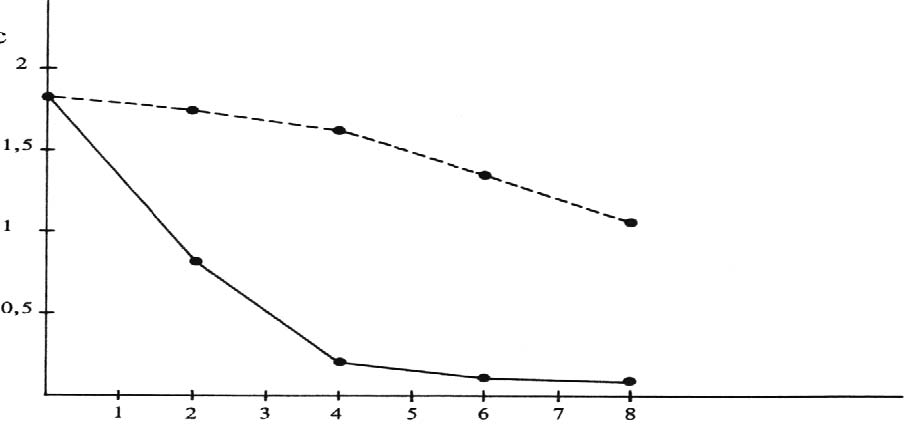
For comparison, rye contains 41% phytates but sourdough rye contains only 3% phytates.
Here’s how to ferment foods to remove phytates: Place the seeds/grains/or beans in a glass jar. Add 1 to 2 tablespoons of your favorite fermentation starter for each cup of dry seeds/grains/beans. Typical sources for the starter are:
· Liquid Kefir
· Whey – the liquid from yogurt that is strained into a cup to capture the liquid.
· Liquid found in naturally fermented vegetables like sauerkraut or pickles.
Fill the jar with water and added fermentation liquid, cover with a tight lid, shake it up to distribute the starter throughout, and allow the food to sit undisturbed until you are ready to cook it. Fermentation occurs from about 24 hours in a warm room to 48 hours in a cool room. When ready, drain and strain the food and cook as usual. You'll find this technique of fermenting will require less water than usual.[2]
3. Sprouting
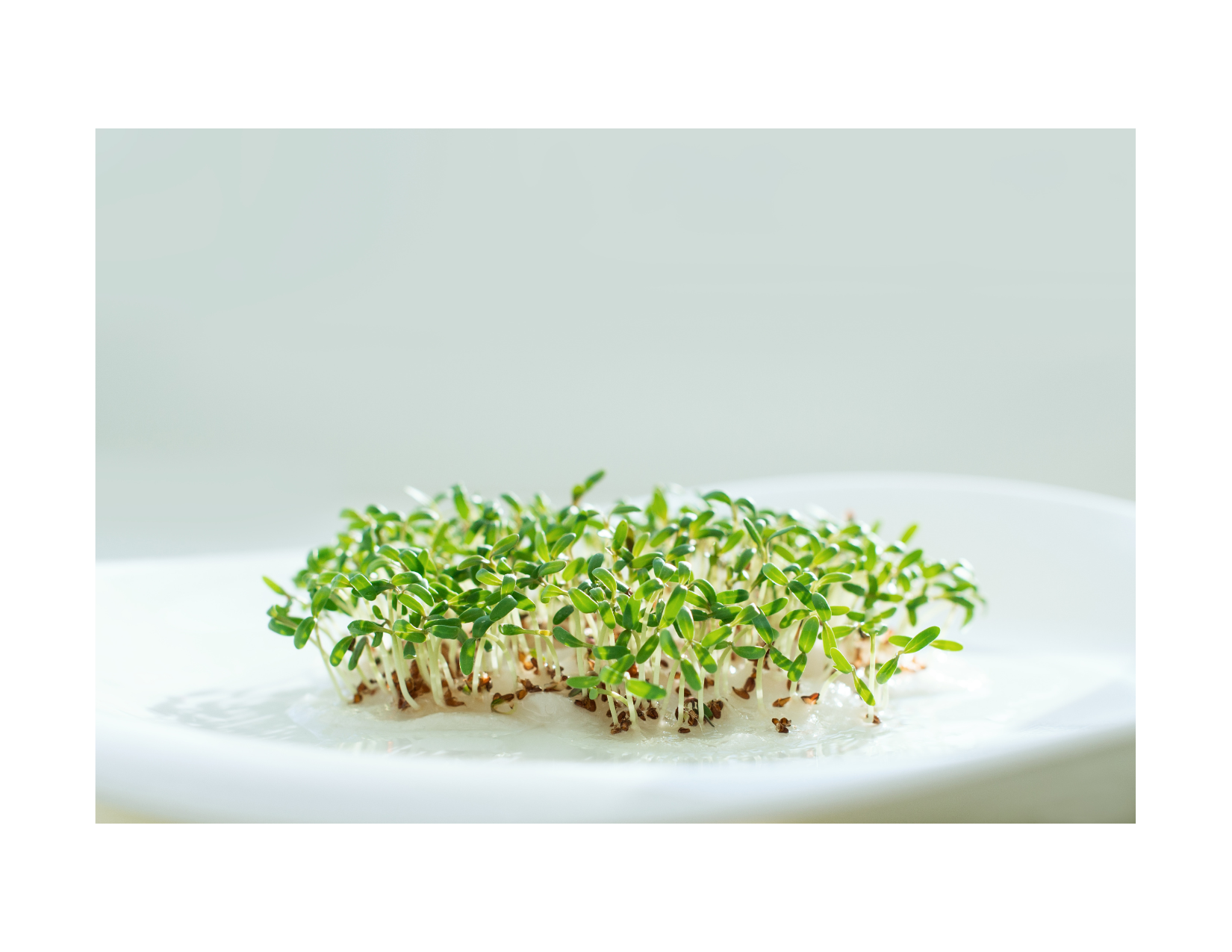
Sprouting[3] seeds is a highly recommended treatment because it releases the enzyme phytase which breaks down the phytate. Sprouting also increases the protein content of the seed or grain.
If you are new to sprouting, I recommend The Sprouting People for organic seeds and kits.
How to sprout – the basics
First, grains are soaked in water until they reach a moisture level that will activate dormant enzymes. The time varies but here’s a guide.
After the soaking water is drained, the grains are sprouted under controlled conditions to increase metabolic processes and mobilize energy reserves to support the growing plant.
These activated enzymes break down proteins into amino acids, carbohydrates into simple sugars and lipids into fatty acids, thereby improving the digestibility of grains.
Furthermore, higher levels of vitamins, soluble dietary fiber, phenolic compounds, antioxidant activity and degradation of antinutrients including phytate can result in greater nutritional value and bioavailability of nutrients compared with non-sprouted grains.
I recommend rinsing the sprouts to remove any hulls. This is where most of the phytates are!
The final step involves drying the grains once the desired nutritional and functional properties are achieved. The intention is to halt the biochemical processes, ensure microbiological safety and maximize the flavor compounds present.

In conclusion, sprouting provides a natural means of reducing phytate and enhancing the nutritional value of cereals and legumes. [full report here.]
4. Adding Seaweed
Cooking beans and rice with a small amount of dried seaweed like kombu improves mineral assimilation and reduces phytic acid.
Just crush dried kombu, wakame, or a handful of green weed leaves, such as dandelion or chickweed and add to your pot of legumes or grains.
5. Adding Rye flour
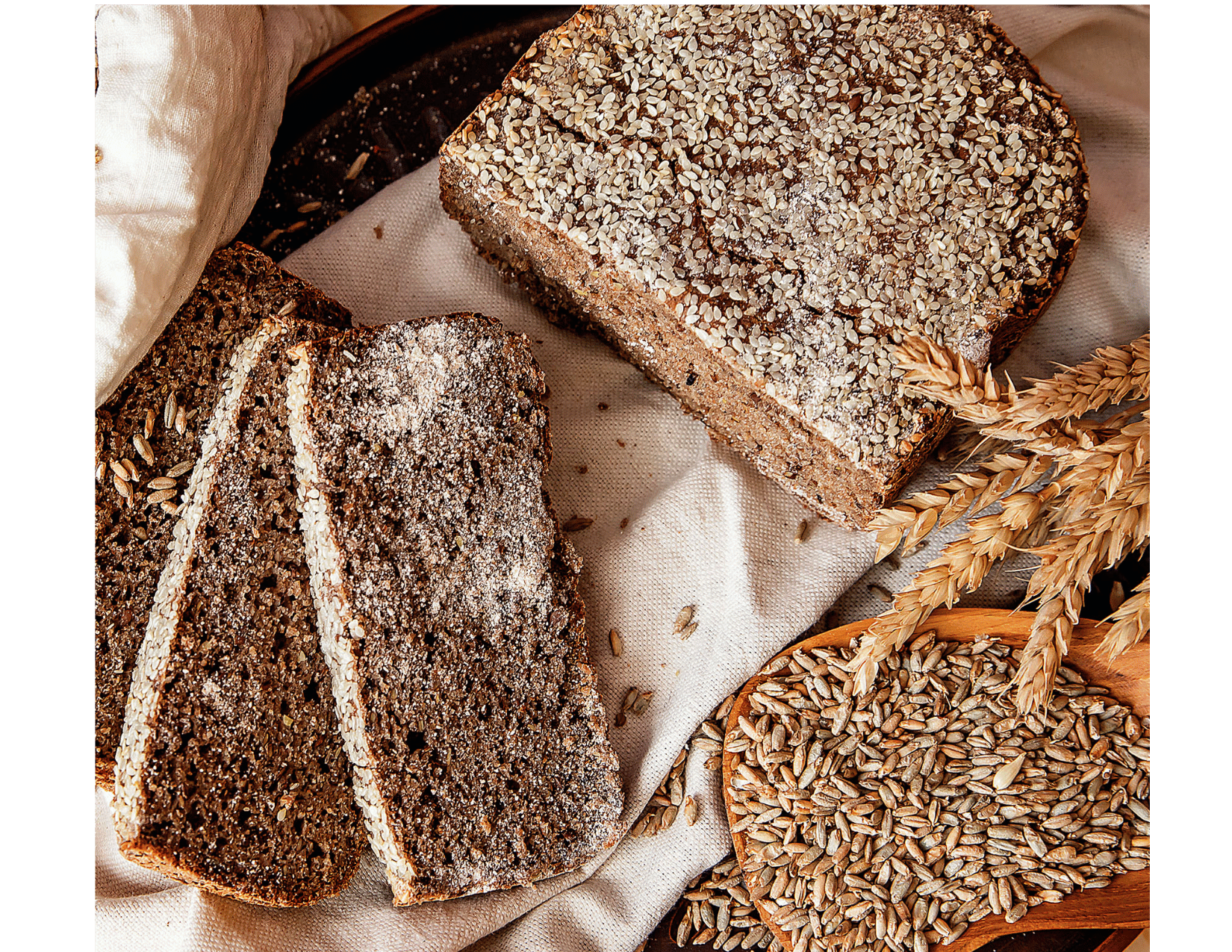
To reduce the phytate content of your diet to an absolute minimum, use any of the above techniques and add freshly ground rye flour or a sourdough rye culture to the high phytate food you are preparing. Rye flour has a significant amount of phytase, the enzyme that breaks down phytic acid. In one research project, soaking ground corn with 10 percent whole rye flour resulted in a complete reduction of phytate in six hours.
*Even the phytates in regular wheat flour are further broken down when made with sourdough techniques.
6. Roasting
Roasting removes 32-68 percent of phytic acid in chick peas and roasting grains removes about 40 percent of phytic acid. The roasting technique is used as a final step in Crunch Munchy Nuts.
Stack up techniques to make your food powerful
1. Soak and ferment rolled or cut oats, cornmeal, rice and other low-phytase grains. Once they have soaked and the water discarded, add an acidic medium like whey, yogurt or sour milk. Warm the mixture to a temperature of about 100 degrees F.
2. Add rye flour: If baking a dish with flour, add some rye flour to increase the digestibility of phytates in the regular flour blend. Many non-gluten flour blends are based on tapioca, soy, and sorghum flours which are all high in phytates. Adding rye helps to reduce the damage they present in the form of phytic acid. To make the rye more powerful, add it to sourdough bread.
-
Soak rice in fermenting water: the procedure comes from a traditional Chinese recipe for rice noodles. The method published by Stephen Guyenet explains it is very simple:
Soak brown rice in dechlorinated water for 24 hours at room temperature without changing the water. Reserve 10% of the soaking liquid (should keep for a long time in the fridge). Discard the rest of the soaking liquid; cook the rice in fresh water.
The next time you make brown rice, use the same procedure as above, but add the soaking liquid you reserved from the last batch to the rest of the soaking water.
Repeat the cycle. The process will gradually improve until 96% or more of the phytic acid is degraded at 24 hours.
This process probably depends on two factors: fermentation acidifies the soaking medium, which activates the phytase (phytic acid-degrading enzyme) already present in the rice; and it also cultivates microorganisms that produce their own phytase.
Phytates do have a beneficial use. There are alternative health practitioners who recommend them for detoxification because of their binding ability. The procedure can be very complicated because it involves chelating using phytic acid and replenishing the lost essential minerals. See a competent health professional for this one.
To sum it up...
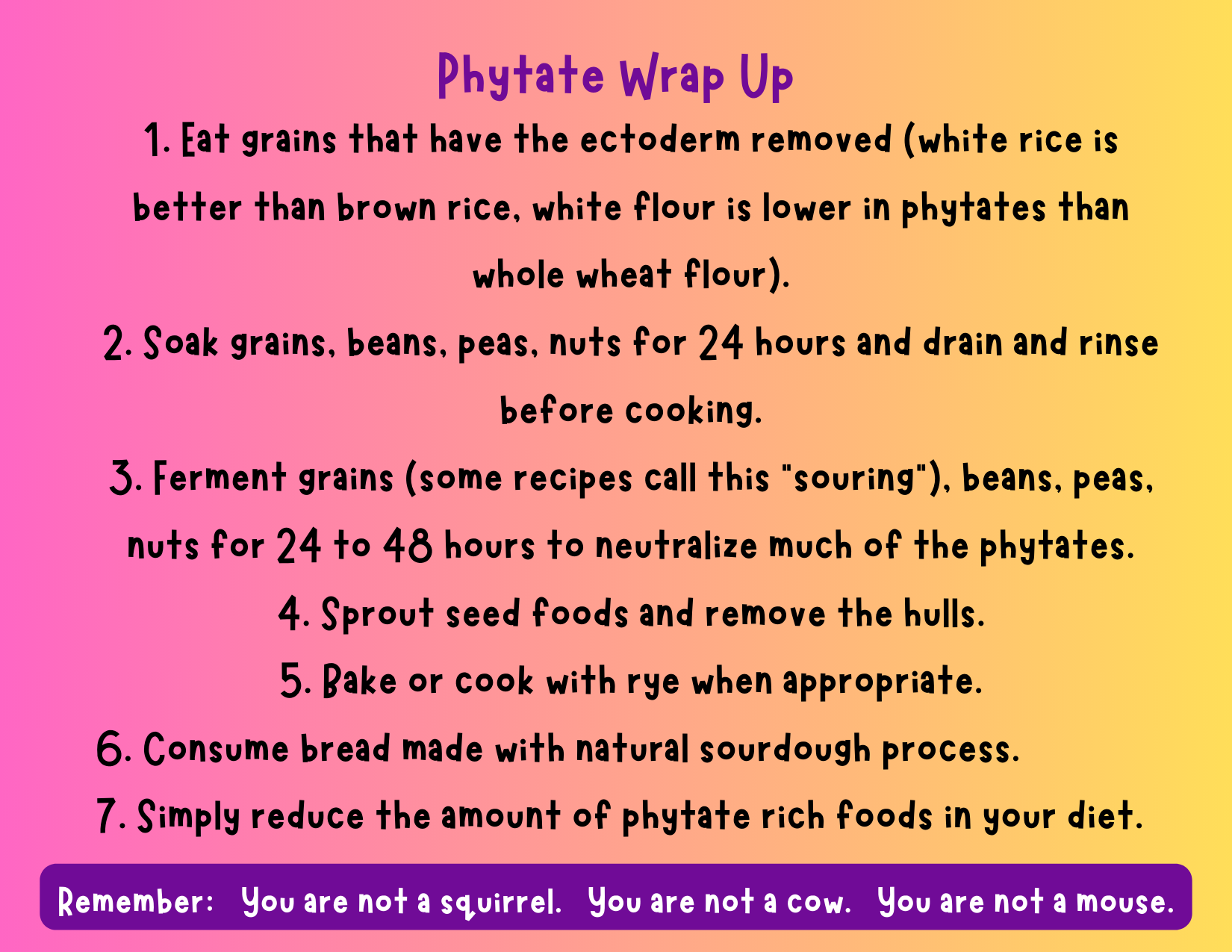
Include a few of these steps to step up your nutrition.
Be Well, Jolinda
[1] For further study: Cho, Judy. Carnivore Cure: Meat-Based Nutrition and the Ultimate Elimination Diet to Attain Optimal Health (p. 206). Nutrition with Judy. Kindle Edition
[2] For a complete guide to fermenting grains: https://svasthaayurveda.com/a-complete-guide-to-fermenting-grains/
[3] https://onlinelibrary.wiley.com/doi/full/10.1111/nbu.12549
[4] In one research project, soaking ground corn with 10 percent whole rye flour resulted in a complete reduction of phytate in six hours.